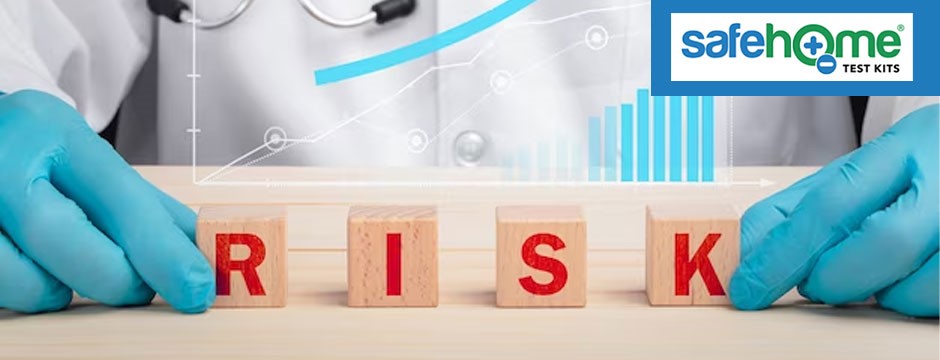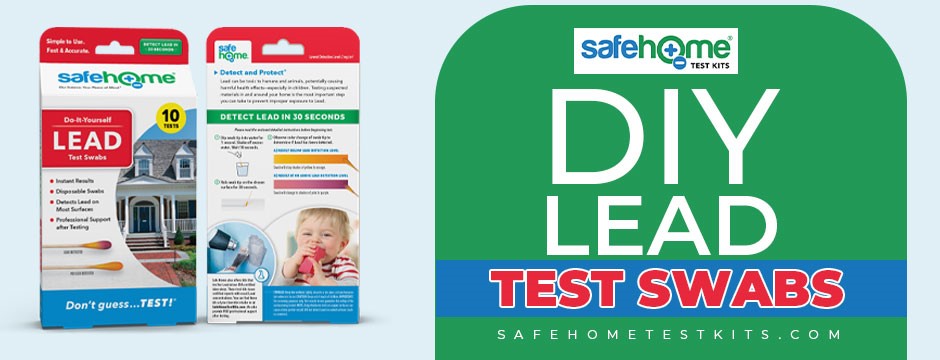The Dangers of Lead Exposure: What You Need to Know

Lead, a heavy metal once widely used in paints, pipes, and other everyday items, has long been recognized as a serious health hazard. While significant efforts have been made to reduce lead exposure in modern society, it still poses a risk, especially for vulnerable populations. In this comprehensive guide, we will explore the dangers of lead exposure, its sources, and how to protect yourself and your loved ones.
Understanding Lead: A Silent Threat
Lead is a naturally occurring element found in the Earth’s crust. Over the centuries, humans have harnessed its malleability and resistance to corrosion for various applications. Unfortunately, this versatility comes at a high cost, as lead exposure can lead to severe health issues, particularly in children and pregnant women.
Sources of Lead Exposure:
1. Lead-Based Paint:
Homes built before 1978 may still have lead-based paint on their walls. While this paint was once celebrated for its durability and vibrant colors, it poses a significant risk, particularly as it deteriorates over time. As lead-based paint chips or turns into dust, it becomes a potential hazard, especially to children who may ingest or inhale it. This risk is why lead-based paint was banned for residential use in 1978.
2. Water Contamination:
Lead can leach into drinking water through lead pipes or fixtures. Aging infrastructure, particularly in older homes, can increase the risk. This source of exposure has drawn attention due to high-profile incidents in cities like Flint, Michigan. Even small levels of lead in drinking water can be harmful, making water quality testing essential for households with older plumbing.
3. Soil Contamination:
Lead contamination in soil often stems from historical sources like leaded gasoline or nearby industrial activities. This threat is of particular concern in neighborhoods with a history of heavy industrial use. Children playing in contaminated soil can inadvertently ingest lead, leading to health issues.
4. Imported Goods:
Certain imported items, such as toys, jewelry, and cosmetics, have been found to contain lead. This poses a risk, especially to children who may come into contact with these items. Vigilance when purchasing imported goods and regulatory oversight are essential for consumer safety.
5. Occupational Exposure:
Certain occupations may entail a higher risk of lead exposure. Workers in construction, painting, and battery manufacturing may face elevated lead exposure risks. Occupational safety measures and regulations are crucial to minimize exposure in these settings.

Health Risks Associated with Lead Exposure
Lead exposure, even at low levels, can have serious health consequences. Children are especially vulnerable, as their developing bodies can absorb lead more easily. The potential risks include:
- Cognitive Impairment: Lead exposure in children has been linked to learning disabilities, lower IQ, and behavioral problems. The neurotoxic effects of lead can significantly impact a child’s cognitive development, making lead exposure a major public health concern.
- Growth Delays: Children exposed to lead may experience delays in physical growth, leading to reduced stature. Proper nutrition and healthcare are essential to mitigate the impact of lead on growth.
- Anemia: Lead can interfere with the production of red blood cells, causing anemia. Anemia leads to fatigue, weakness, and other health issues, affecting the overall well-being of those exposed to lead.
- Kidney Damage: Prolonged exposure to lead can damage the kidneys, potentially leading to kidney disease. Kidney health is crucial for overall bodily functions, and any damage can have severe implications.
- Nervous System Effects: Lead can impair the nervous system, causing symptoms such as headaches, mood disorders, and, in severe cases, seizures and coma. These neurological effects highlight the acute and chronic dangers of lead exposure.
- Reproductive Issues: Lead exposure during pregnancy can harm the developing fetus, leading to premature births or low birth weight. The reproductive health of both mothers and their babies can be compromised.
- Cardiovascular Problems: Emerging research suggests that lead exposure may increase the risk of cardiovascular diseases in adults. This presents a long-term health risk and underscores the importance of minimizing lead exposure.
Prevention: Keeping Your Loved Ones Safe:
Protecting your family from lead exposure requires diligence, especially if you live in an older home or an area with a history of lead contamination. Here are some essential steps to safeguard your loved ones:
1. Get Your Home Tested
If your home was built before 1978, consider having it tested for lead-based paint. Professionals can assess the risk and advise you on necessary actions. Regularly inspect and address any peeling or chipping paint to minimize the risk of lead exposure.
2. Address Water Concerns
If you have concerns about lead in your water, consider having it tested by a certified laboratory. If lead is detected, use cold water for drinking and cooking, and install a water filter certified to remove lead. These measures can significantly reduce lead exposure through water consumption.
3. Maintain a Clean Environment
Frequently clean and dust your home, particularly if it may contain lead dust from deteriorating paint or other sources. Ensure children wash their hands and toys regularly. These simple hygiene practices help reduce the risk of lead exposure.
4. Healthy Nutrition
A diet rich in iron, calcium, and vitamin C can help reduce lead absorption. Encourage your family to eat a balanced and nutritious diet, which can mitigate the health effects of lead exposure.
5. Regular Medical Check-ups
If you suspect lead exposure or live in an area with a history of lead contamination, consider regular check-ups for lead screening, especially for young children. Early detection can help address lead exposure before it causes severe health issues.
6. Safe Renovations
If you plan to renovate your home, take precautions to minimize lead exposure. Professionals can safely remove lead-based paint, and you can create barriers to prevent dust from spreading during renovations. These measures are crucial to protect your family during home improvement projects.
7. Safety at Work
If you work in an occupation involving lead exposure, follow recommended safety measures and use personal protective equipment. Occupational safety is essential to safeguard workers from lead exposure risks.
Legal Protections and Advocacy
Efforts to reduce lead exposure have led to legislation and regulations to protect individuals and communities. Organizations like the Environmental Protection Agency (EPA) and the Centers for Disease Control and Prevention (CDC) provide resources and guidelines for addressing lead exposure risks. Legal protections, such as lead abatement programs, ensure that lead hazards are mitigated, especially in older housing stock and at-risk communities.

Detecting Lead Contamination: Safe Home's DIY Lead Test Swabs
Safeguard your loved ones from the hidden dangers of lead contamination with Safe Home’s DIY Lead Test Swabs. Lead exposure is a growing concern, affecting millions of people exposed to everyday items contaminated with this toxic metal. Protect your family by taking the first step to detect lead in your surroundings.
Our Do-It-Yourself Lead Test Swabs offer a quick and straightforward solution for lead detection. You can easily test various surfaces in and around your home, including painted walls, wood, plastic, metal, children’s toys, and furniture. With instant results in 30 seconds, you’ll swiftly gain the knowledge you need to make informed decisions about your living environment.
Lead poses significant health risks, particularly for young children, the elderly, and pets. According to the CDC, over 10 million U.S. households have children exposed to high lead levels. Safe Home’s Lead Test Swabs empower you to take control of your family’s safety and well-being.
Key Features:
- Do-It-Yourself Lead Test Swabs (10 Ct): Each package includes ten disposable test swabs to detect lead on most surfaces. This convenient, cost-effective solution allows you to check your home for potential lead hazards thoroughly.
- Versatile Testing: Our swabs can be used on various surfaces, ensuring comprehensive testing. Safe Home’s Lead Test Swabs have you covered whether you’re concerned about lead in paint, furniture, or toys.
- Rapid Results: In just 30 seconds, you’ll have visible test results that indicate whether lead is below the detection level or at/above it. You won’t have to wait for lab results, giving you immediate peace of mind.
Take the proactive step in ensuring your home is lead-safe. With Safe Home‘s DIY Lead Test Swabs, you’re equipped to detect lead contamination, allowing you to take necessary corrective actions promptly. Prioritize your family’s safety and well-being and create a healthier living environment for your loved ones. Order Safe Home’s Lead Test Swabs today and experience the confidence of a lead-free home.
Conclusion
Lead exposure remains a significant health concern, but awareness and proactive measures can help mitigate the risks. By understanding the dangers of lead exposure, taking preventive actions, and staying informed about legal protections, you can protect your loved ones and contribute to a safer, healthier future. Be vigilant, and remember that when it comes to lead exposure, prevention is key.


